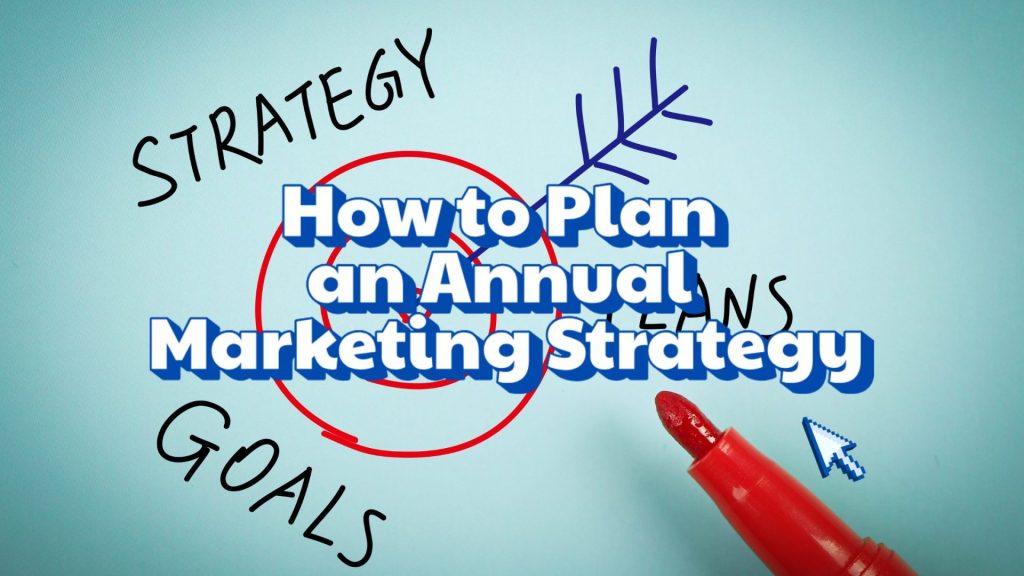Short marketing campaigns are essential tools for achieving specific objectives and milestones. One campaign can introduce a new service, while another campaign might rev up interest in your summer sale. However, if you don’t have an overarching marketing strategy, those efforts are disconnected and may not feed directly into your long-term growth goals.
Before you start developing individual campaigns, create an annual marketing strategy that sets long-term objectives, generates more consistent results, and prioritizes continuous brand awareness. Brands succeed with marketing strategies that orient individual campaigns toward consistent growth objectives and ensure a consistent customer experience.
Follow these steps to start crafting your annual marketing strategy:
1. Review the Previous Year’s Marketing Performance
Don’t begin your strategy in a vacuum. Instead, assess your efforts from the previous year. Which goals do you want to maintain? What structure of milestones and KPIs saw the best results? Reviewing your past marketing performance doesn’t just show you what worked and what didn’t. It also gives you realistic numbers for growth goals that will be at the foundation of your efforts.
If you don’t have past data to review, that’s okay! Creating an annual marketing strategy can still give you a working framework. It also means you’ll have plenty of useful data to work with next year.
2. Define Your Target Audience
Now, it’s time to dig in and identify who you want to engage through your marketing efforts. You need to know:
- Who your ideal audience is
- What messaging works best for them
- What pain points you can resolve for them
- What channels you can most effectively reach them on
You may have multiple different target audiences, and some of your campaigns may cater to individual audiences. The more detail you have at this stage, the more effective all of your campaigns will be.
3. Set Goals and Objectives
The entire structure of your annual marketing plan should be built around the goals you want to achieve. Identify both year-round objectives and smaller goals and milestones that feed into those goals.
You can easily create clear, detailed goals by using the SMART goal method. SMART goals are:
- Specific
- Measurable
- Achievable
- Relevant
- Time-bound
With these goals, you have a very actionable destination that you can break down into a series of achievable steps. This is especially crucial if you don’t have a marketing strategy from last year to duplicate and modify. Taking the extra time now to create a well-organized plan will pay dividends in the years to come.
4. Identify Your Budget
Next, decide how much money you can allocate to your marketing. Once you identify an annual budget, you can break that down into quarterly, monthly, and weekly intervals.
Many businesses have peak seasons, such as the holiday shopping season. Be sure to distribute your marketing budget to ramp up sales during these periods instead of just evenly splitting the funds across the calendar.
5. Choose Your Marketing Channels
The media channels your target audience frequents are the channels you need to prioritize. These channels should also be specifically mentioned in your SMART goals. For example, you might want to increase sales from Facebook ads by 20% or set a goal of posting on Instagram five times a week.
You can tailor different marketing channels to different stages of the customer journey, such as publishing retargeted ads for customers in the consideration stage, promoting helpful content during the browsing stages, and sending automated emails as part of a post-purchase cycle.
6. Monitor and Measure Your Results
Measure your marketing results throughout the year. If you can, set aside a weekly meeting time for yourself or your team so you can see how different campaigns are performing and if you need to make revisions. Active monitoring makes it much less likely that you’ll miss opportunities to pursue more sales or sunset a poor-performing campaign.
However, it’s just as important to not quit early. Some marketing methods, such as content marketing, can take months to demonstrate their potential. So, make sure not to prune slow-growing campaigns too early.
Start Developing Your Annual Marketing Strategy With Mid-West Family La Crosse
Creating and implementing an annual marketing strategy on your own or with a small team is a lot of work. It can also be inefficient because you’re creating everything from the ground up and may not have all the right processes in place. With a full-funnel media partner, you can have support for all of the various initiatives and stages of your marketing efforts.
At Mid-West Family, we can help you map different media and marketing channels to each stage of the customer journey and move to put those channels to work. If you want the help of a professional strategist to get the ball rolling, get a free digital evaluation today!
An annual marketing strategy is a strong framework for organizing your marketing efforts, keeping control of your budget, and more effectively launching campaigns. Contact the team at Mid-West Family La Crosse to create a marketing plan, set up campaigns, and more.








